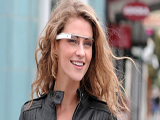Line Between Human And Machine Blurs: Google Glasses Step Closer To Science Fiction
Post Views 1
A video posted at the Project Glass page at Google+ established that Google was preparing to create eye-wear that interlocks the online world with the real world.
The video shows a wearer of the spectacles seeking and getting subway information, fixing an appointment with a friend, circumnavigating the inside of a bookstore. He does all this with the help of the glasses. In the end, via a video chat he plays the ukulele for a woman and shows her a sunset.
Analysts have feared that this could have serious, safety and privacy consequences. It could allow a wearer to look into Facebook details of the guy sitting next to him on a bus, moreover, it could detract him while driving and worst of all, having a screen so near to the eyes could have long lasting negative effects on vision.
The eyewear has been in the development stage since the last couple of years and is the brainchild of a team from the Super-secret future lab, Google X, from where had germinated the idea of a self-driving car.
Members of the lab said, “We think technology should work for you – be there when you need it and get out of your way when you don’t. A group of us from Google X [Labs] started Project Glass to build this kind of technology; one that helps you explore and share your world.”
The images shown in the video, show people were stylishly framed eyeglasses. Through tiny cameras and on-lens displays, the wearer tactfully gets information ranging from walking directions, messages from friends and even weather forecasts. The wearers can command the Internet-linked classes, by talking into built-in microphones.
Google allayed fears of the product coming into the market soon and said that it was merely an idea, intended to start debate and discussion and to assess the feedback they received. Google said, “”We took a few design photos to show what this technology could look like and created a video to demonstrate what it might enable you to do.” The project team said that they welcomed views and opinion for the glasses at the Google+ page.
“My son is 4 years old and this is going to be his generation’s reality,” said Guy Bailey, a social media supervisor for Kennesaw State University outside Atlanta.
Veteran technology analyst Rob Enderle said, “It’s coming. Whether Google is going to do it or someone else is going to do it, it’s going to happen,” “The question is whether we’ll be ready, and given history we probably won’t be. As a race we tend to be somewhat suicidal with regard to how we implement this stuff.”
The Google glasses are not without their share of criticism and critics believe that given Google penchant for advertisements, the eyewear would be too tempting an ad-platform for Google to skip. CNET Technology reporter Larry Dignan said, that for all its positives, “the up-close data could also have invasive advertising right at your eyeballs.” Jonathan McIntosh, who constantly berates companies about the ills of advertising, has remixed the “Project Glasses” video to include Google ads. In his video “Admented Reality” he uses his hacking skills to edit in ”actual Google ad returns he received for Google searches based on the “dialog, situation or setting” of the original video.” McIntosh calls Google “a massive advertising company at heart”. There is little doubt that if and when the glasses do become a reality, Google will incorporate advertising.



 E-Cigarette Ads Increasing in Number and Effectiveness
E-Cigarette Ads Increasing in Number and Effectiveness  14 Apps to Change Things Up in Your Life
14 Apps to Change Things Up in Your Life